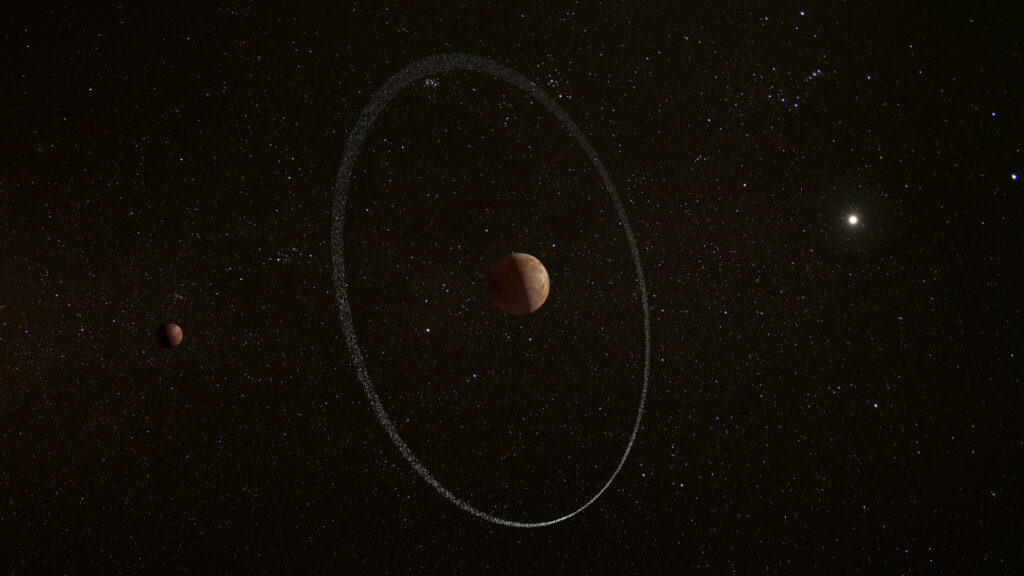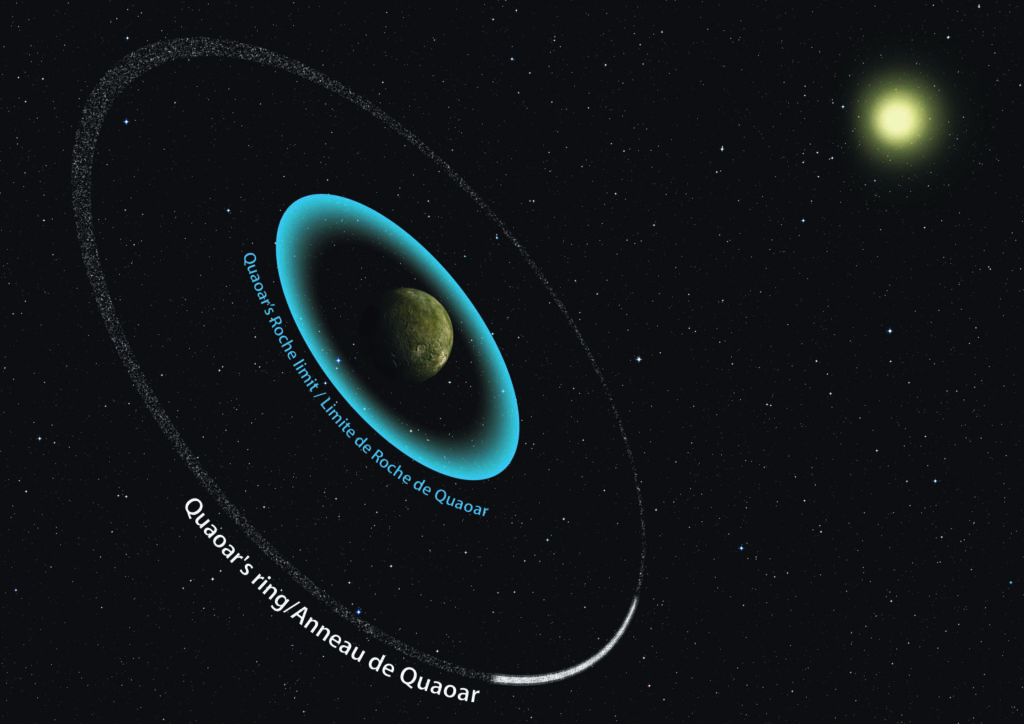An international team of researchers has announced the discovery of a ring at Quaoar, an icy body at the edge of the Solar System that is a candidate for dwarf planets.

Quaoar was identified in 2002. At that time, it was the largest object of the Solar System found since the discovery of Pluto. Its orbit passes at a distance of about 44 au from the Sun, the diameter is estimated at 1110 km. In 2007, an 80-kilometer moon was found near Quaoar, which was named Weywot.
In a recent study, a group of astronomers took a picture of Quaoar using a HiPERCAM high-speed camera mounted on the Grand Canary Telescope. Their goal was to observe the coverage of the background star by the object. Scientists use such events to determine whether celestial bodies have an atmosphere, as well as to search for moons and rings.
The search turned out to be effective. Astronomers managed to record the dimming of the star before the immediate beginning and immediately after the completion of the covering. They indicate that the Quaoar is surrounded by a ring.

Ring systems are rare in the Solar System. In addition to gas giants, at the moment they are found only at the asteroid Chariklo and the dwarf planet Haumea. However, the Quaoar ring has an important feature. It is located from the body at a distance of 7.4 times its radius. This is almost twice the Roche limit for Quaoar — the minimum distance at which tidal forces will destroy its moons.
Previously, it was believed that it was the proximity to the celestial body that was the key factor that prevented the particles of the rings from gathering into a single moon. For example, the main ring of Saturn is located from it at a distance of only three radii of the planet. The researchers note that the discovery of the Quaoar ring will probably require the search for a new model explaining how it is formed and why it has been preserved.
Earlier we talked about how the James Webb Telescope studied the rings of Chariclo.
According to https://phys.org
Follow us on Twitter to get the most interesting space news in time
https://twitter.com/ust_magazine

